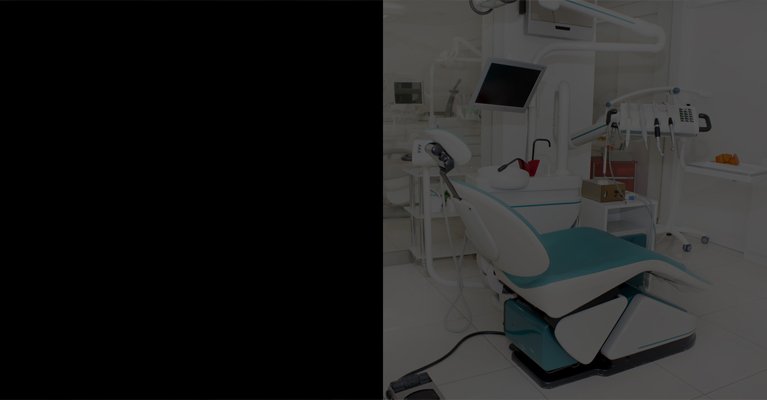















Dental implants are used to replace lost teeth. First deployed in the mid-1960s, they have become increasingly popular as an alternative to removable dentures. Dental implants can be used to support crowns that replace single lost teeth, bridges that restore several lost teeth, and even dentures in patients that have become edentulous (toothless).
Implants are generally manufactured from titanium, a metal known to be compatible with body tissues and able to bond with adjacent bone during healing. In recent years, implants made from zirconia – which is white rather than metallic in colour and which has similar bone-bonding qualities to titanium – have become more popular and have been shown to be as effective as titanium ones.
There is now a wealth of evidence from studies and from clinical experience to show that dental implants are a safe and convenient way to replace lost teeth with natural-looking results.
But implants, like natural teeth, need to be looked after. Peri-implant diseases – which involve inflammation of the gums and damage to the bones and tissues around implants – can cause serious problems and lead to the loss of implants. So good oral hygiene at home and regular check-ups with your dentist are essential.

A dental implant is essentially a titanium/zirconia screw or cylinder, between 4mm and 16mm long, which is inserted into a prepared bony socket in the jaw and acts as a replacement root for the missing tooth. A special attachment called the abutment is fitted to the top of the implant and forms the external connection to the replacement tooth (crown) or teeth (bridge or denture).
Once an implant has been placed in the jaw, it needs to heal before the crowns can be added. During this healing – which can take between two and six months – the surface of the implant fuses with the surrounding bone, a process known as osseointegration. Once this process is finished, the implant is stable enough to support one or more false tooth.
There are also one-piece implants were the abutment and the implant are part of a single piece.
In certain cases, where the conditions are favourable, implants can be placed immediately into the extraction socket. This type of treatment is called immediate implant placement and has the same success rates as delayed implant placement.
Furthermore, when implants have excellent primary stability, the dentist can also put a temporary crown on it, which is called immediate loading. When planning implant placement, you should ask your dentist or periodontist if you are a candidate for these procedures.
After discussing the treatment options that are suitable for you, your dentist or periodontist will conduct a thorough physical examination of your mouth and will take x-rays and/or a cone bean computed tomography (CBCT) scan of your jaws to assess the shape and condition of your bone tissue and locate the positions of important structures – such as nerves and sinuses – which may be close to the intended implant site. This allows the dentist to plan exactly how the implants will be placed. Sometimes ordinary x-rays are not enough and a CBCT scan may be used to provide three-dimensional images if bone reconstruction procedures are needed to develop bone prior to implant placement.
Implant surgery can be carried out in one or two stages, depending on your specific circumstances. In both cases, the surgery involves making a small incision in the gum to expose the bone and then using special drills to prepare the implant “bed” into which implants are inserted.
Two-stage surgery may be necessary if there is a need to increase the quantity of bone at the implant site by using a bone graft or a technique to regenerate bone. There are various reasons why there might be a lack of bone at the implant site, including long-term missing teeth, denture wear, and bone loss from periodontal disease, ageing, or following trauma. When teeth are missing, the surrounding gum and underlying bone shrink away over time.
When your gums have fully healed (after about four to six weeks), your dentist will take a new impression of your mouth. This will be used to make a model of your teeth on which the dental technician will construct your crown or bridge, taking care to achieve a natural finish that matches the rest of your teeth.
When your new crowns and bridges have been prepared, your dentist will cement or screw them onto the abutments over the dental implants, check that they fit well and look good, and check that your upper and lower teeth work together comfortably when you bite. You will usually need to return for several review appointments to make sure that the implants are stable and functioning well, and that you are completely happy with the finished result.
In some cases, bone grafts or bone regeneration are needed to prepare the jawbone to be able to support the implant.
Bone grafts are carried out to increase the width and height of the jawbone at the implant site. There are various types of bone graft:
An autogenous graft is the preferred option because there is no risk that your body will reject it. After the procedure, you will need to wait for at least three months before having implants placed, so that healing can take place. The exact waiting time will depend on how much bone has been grafted.
Guided bone regeneration is a special technique that helps to give bone cells an advantage over other types of cell to multiply and fill an area where bone loss has occurred. Usually, cells from the gum surface and the connective tissues are much faster at filling the gaps created by periodontal destruction compared with the bone cells. This means bone may not have an opportunity to regenerate even when inflammation has been eliminated. In this procedure, a barrier membrane covers the area of bone loss and blocks access to it to the other cell types, giving the bone cells a chance to fill in the defect. The barrier may disintegrate and eventually disappear (resorbable) or may need to be removed in a later procedure (non-resorbable).

Refer patients for:
Teddington Dental
Sheen Dental
Sunningdale Dental Practice
@Teddington 020 8977 2911
@Sheen 020 8876 5277
@Sunningdale 01344 620526